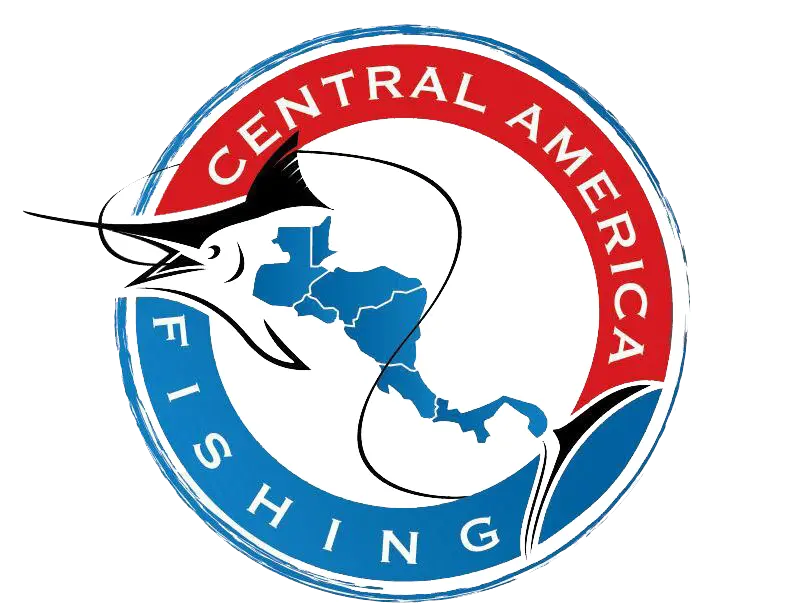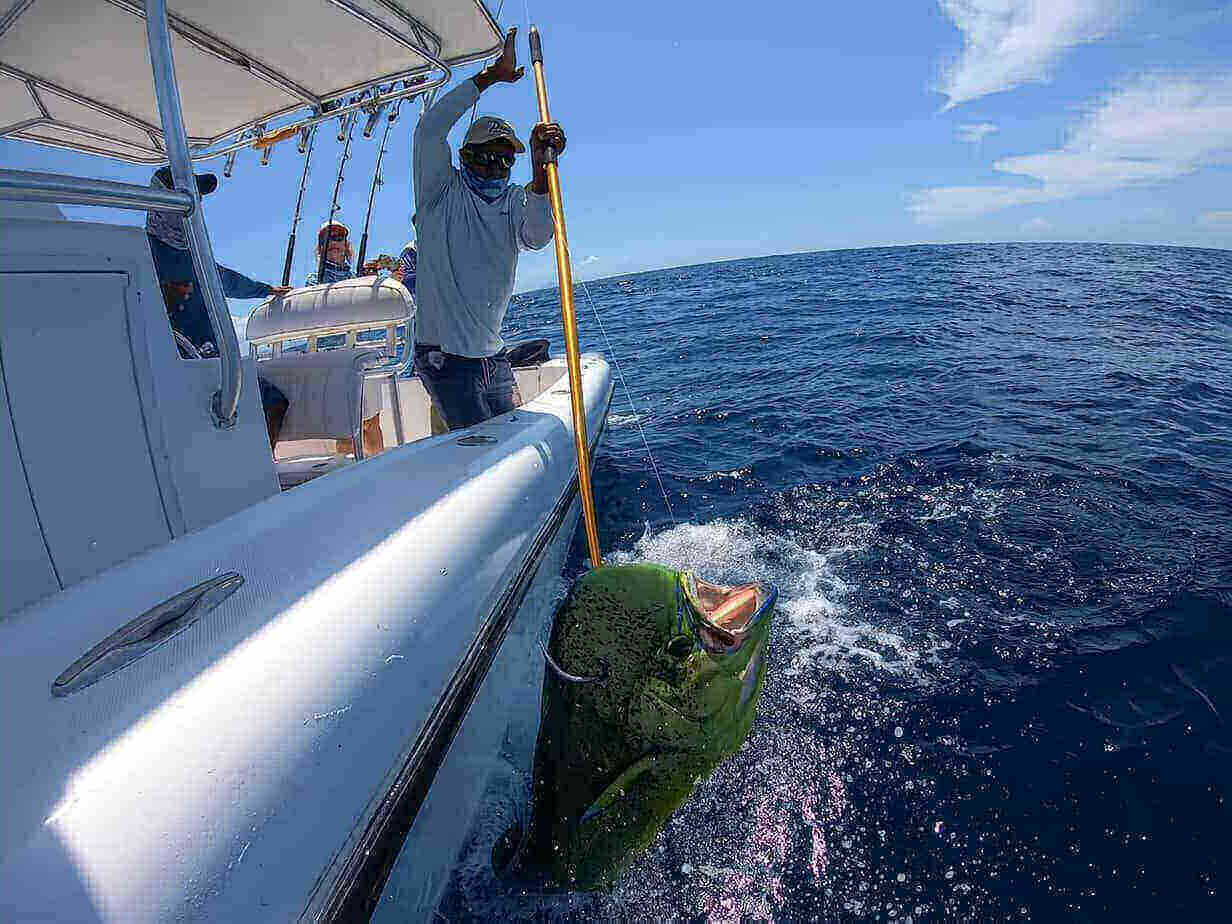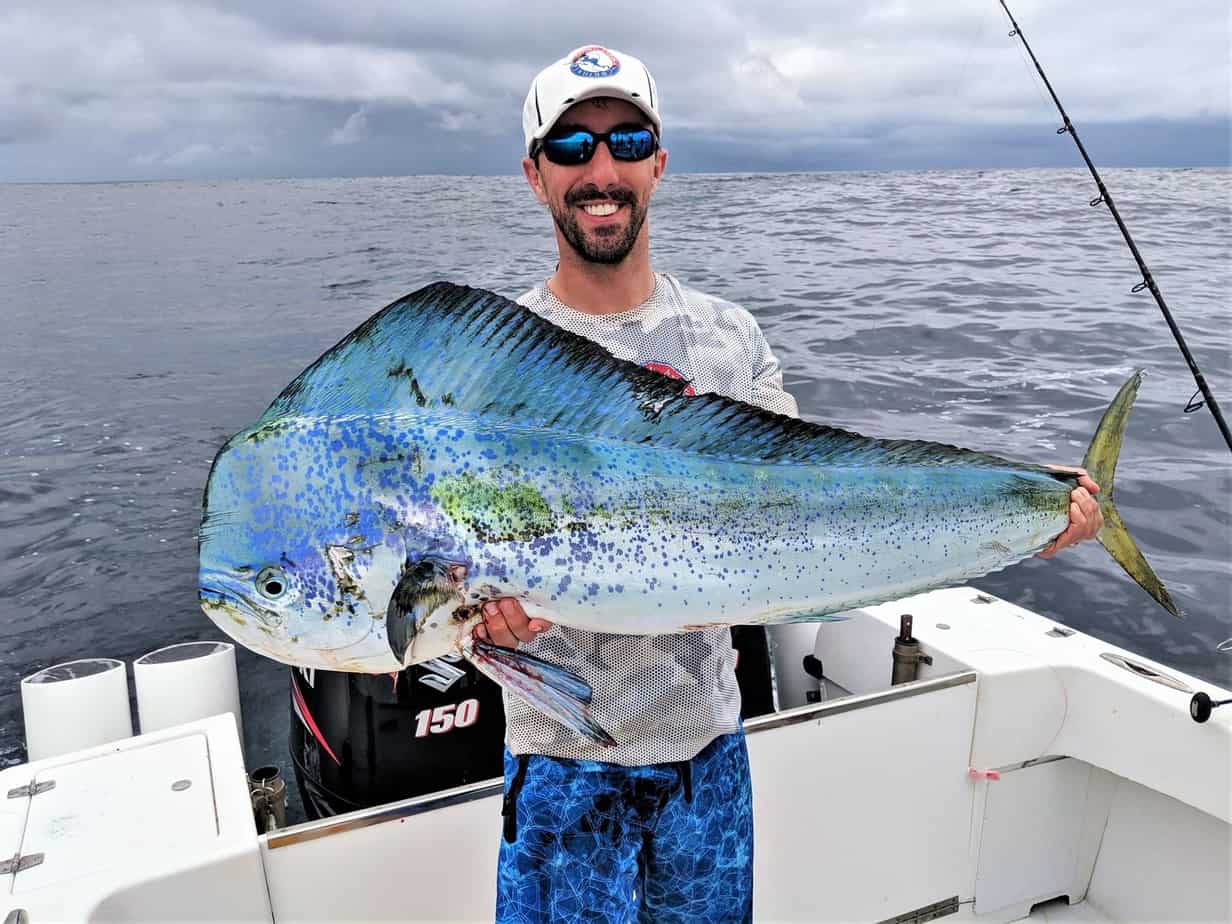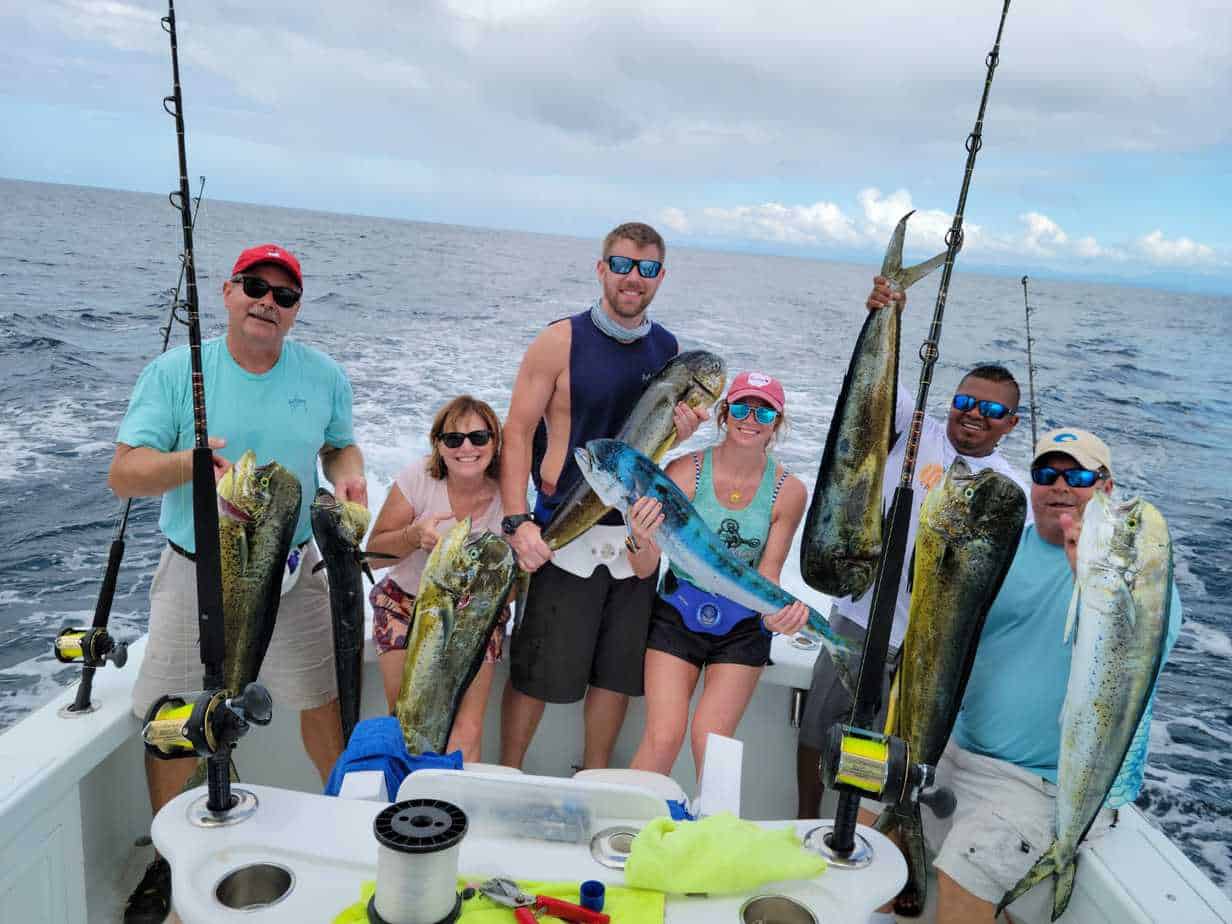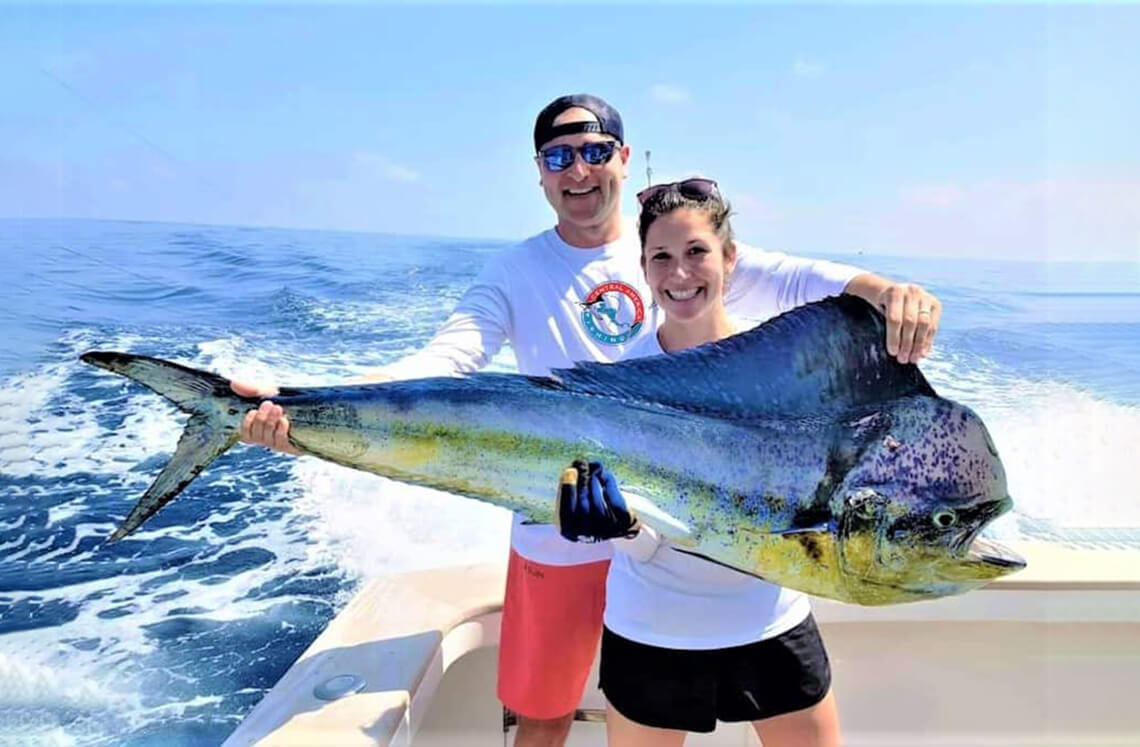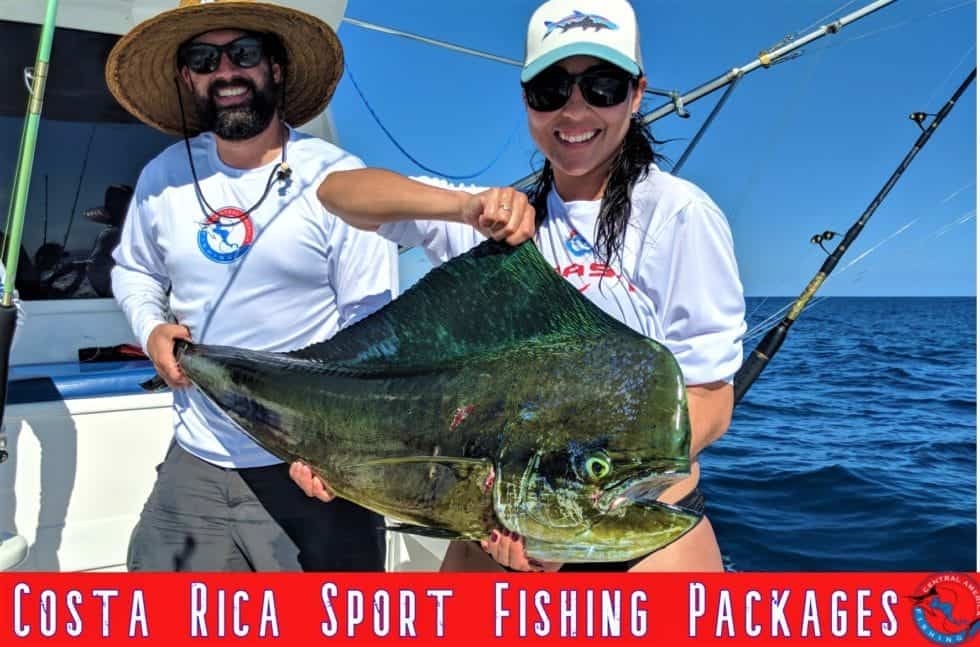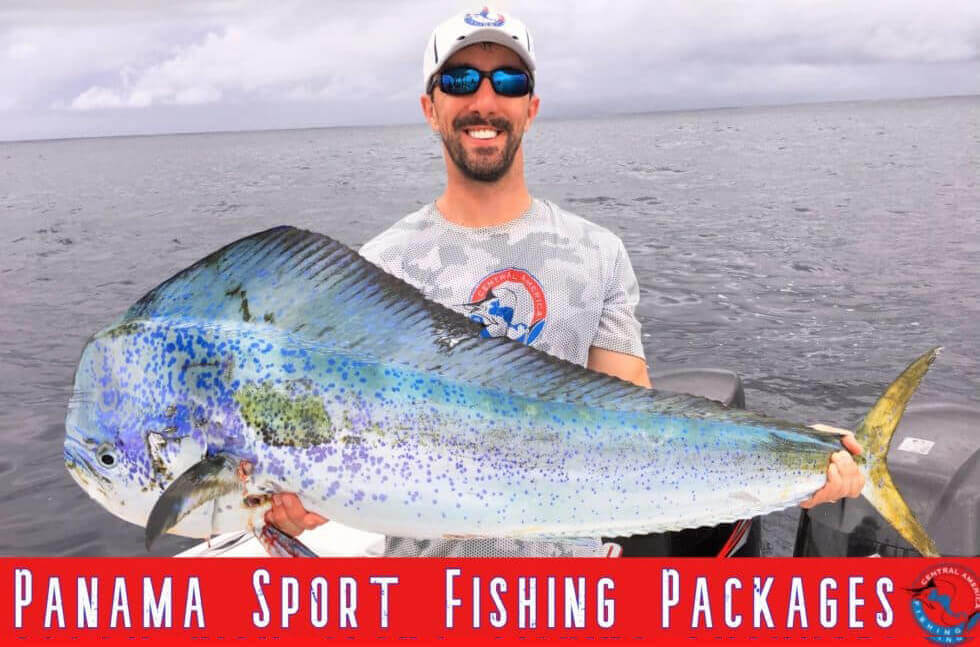Dorado (Mahi-Mahi)
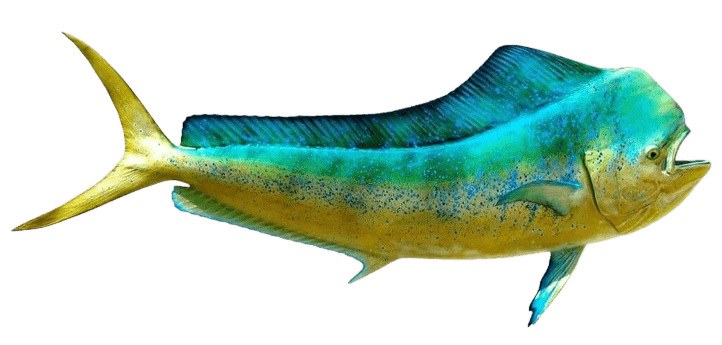
The vibrant greens, yellows and blues found on the Dorado (Mahi-Mahi) make it one of the most recognizable fish in the ocean. In their natural underwater state dorado are bright yellow, but when excited or hunting parts of their bodies seem to be glow a neon blue. After they pass their bodies turn a darker shade of green which makes their color transition more dramatic and rapid than any other fish in the ocean. This transformation has earned dorado the nickname ‘the most colorful fish in the sea.‘
Dorado have as many names throughout the world as their bodies do colors. On the Atlantic they are often referred to as dolphin or dolphinfish while on the Pacific they are often referred to by their Hawaiin name, mahi-mahi. It is most often in Latin America they are referred to as dorado, which means ‘golden’.
Dorado are one of the fastest growing fishin the ocean and reach sexual maturity by six months of age. During their first year of life, they can grow as much as two inches a week. A typical lifespan is just 6-7 years, so they are one of the most sustainable fish in the ocean. Most dorado that are caught are in the 10-30 lb range, with smaller fish being found in bigger schools. Mature adults can weigh over 50 lbs. Male dorado, referred to as bulls, are the exception among many pelagic species in that they are often bigger than their female counterparts. Bull dorado are also very distinguishable by their blunt, vertical forehead while females are more rounded.
The Diet of a Dorado
Offshore they feed on squid, flying fish, small bonito, mackerel, crabs and many other species of smaller or juvenile fish. One dorado that was gutted here in Costa Rica had over 20 baby sea turtles in it’s stomach! They are opportunistic feeders and will feed in large schools when bait is present.
Best Ways to Catch Dorado (Mahi-Mahi)
In Central America, dorado are often caught when trolling ballyhoo for sailfish and marlin. While billfish always come into the spread from behind the baits, often times you’ll see the dorsal fin of a dorado slashing in from the side before one of the reels starts to scream. They’ll hit naked ballyhoo, but seem to be especially fond of Hawaiian skirts. Dorado are much easier to hook on circle hooks than billfish as they typically come into your spread in a frenzy ready to eat while many times billfish will whack your bait with their bills before eating.
Dorado are also commonly found raiding the baitfish found under floating tree trunks or other garbage. When this situation presents itself you can sight cast to the lit up dorado using poppers and stick baits. Some of our favorites are Yo-Zuri mag darters and bull poppers.
What is the World Record Dorado (Mahi-Mahi)?
The all tackle world record is an 87 lb monster caught right here in Costa Rica back in 1976. Costa Rica and Panama both boast several line class records as well as tippet class records for dorado that were caught on the fly.
When is the Best Time to Fish for Dorado (Mahi-Mahi)?
In Central America, dorado are caught throughout the entire year on both oceans. Literally any day you head offshore fishing you have a chance of catching dorado. That said, some months are historically better than others. It seems that the best numbers of large, adult dorado are in November and December as Central America transitions back to the dry season. During the dry season months (Dec-Apr), the dorado are still around, but they can be much more hit or miss. Then, once our green season starts in May the numbers pick up again. The reason why is the afternoon rains start to wash out garbage, trees, and other debris from the coastal rivers and those form garbage lines or floating FADs that dorado love to congregate around. In the months of May-Sep we have days of double digit mahi, however these tend to be the smaller, younger fish.
Where is the Best Dorado Fishing in Central America?
Dorado are found all over the globe in tropical and temperate seas, which is why they are so popular and have so many names. Occasionally found inshore near islands and reefs, they are a migratory pelagic species that often live in large schools. Although mature adults will roam the open waters, dorado are notorious for hiding out along currents and trash lines where they use anything from trees to floating garbage as cover. Here in Central America we catch dorado on both oceans and in every country, but the numbers are best in Costa Rica and Panama.
